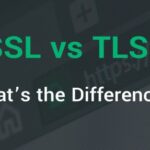Once upon a time there was a small village called Secureville. The villagers took privacy and security very seriously, and so they established a protocol to ensure that all of their communication remained secure and private. This protocol was called SSL/TLS (Secure Sockets Layer/Transport Layer Security).
Here’s how it worked. Firstly, each villager had a unique digital certificate issued by a trusted Certificate Authority. This digital certificate was essentially just like an ID card, showing the villager’s name, address and other contact information. Whenever two villagers wanted to communicate, the digital certificates would be exchanged first, allowing each party to confirm the identity of the other.
Once the identity of the two villagers was confirmed, an encrypted connection would be established between the two parties. This encryption was made possible by a process called “symmetric key cryptography”, which basically means that both sides shared a secret key (or password) that only they knew. Using this secret key, all data transmitted between the two villagers was securely encrypted and only the two parties involved would be able to decrypt and read the data.
To make sure that the secret key didn’t fall into the wrong hands, each communication session was also protected by a process called “asymmetric key cryptography”. This type of encryption created two keys – a public key, which was visible to anyone, and a private key, which was kept safe and only used by the two people involved in the conversation.
The combination of symmetric and asymmetric key cryptography meant that even if someone tried to listen in on one of the villagers’ conversations, they wouldn’t be able to decipher the data as it was all encrypted. This allowed the villagers of Secureville to communicate safely and securely, ensuring that all of their secrets remained just that – secrets.




